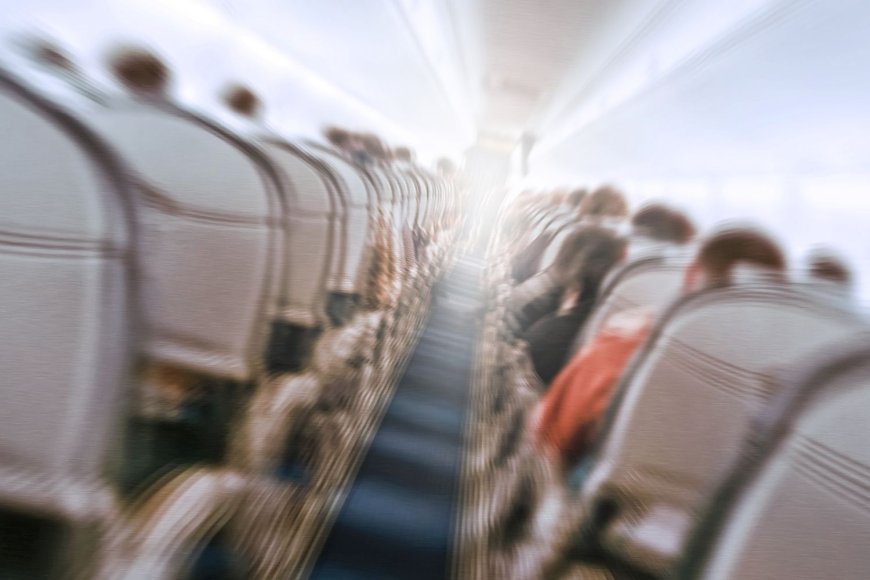Yes, Turbulence on Planes Has Gotten Worse — Here's Why
A 2023 study published by the American Geophysical Union found skies are 55% bumpier than 40 years ago

A 2023 study published by the American Geophysical Union found skies are 55% bumpier than 40 years ago Getty Stock image of plane turbulence from inside the cabin:max_bytes(150000):strip_icc():format(jpeg)/plane-turbulence-072925-f3cb03b13c0e4abaa68ccdbee8f5ae67.jpg)
NEED TO KNOW
- According to a study published by the American Geophysical Union in 2023, skies are 55% bumpier today than 40 years ago
- "The increases in turbulence are consistent with the effects of climate change, according to previous research,” a press release stated at the time
- Mark Prosser, a meteorologist at the University of Reading in England, said airlines "will need to start thinking about how they will manage the increased turbulence"
It’s not just you, turbulence while flying is getting worse.
According to the Federal Aviation Administration (FAA), turbulence is the normal and frequent movement of air that can affect an aircraft. It often occurs unexpectedly and without warning, and is caused by atmospheric pressure, jet streams, cold or warm weather fronts and thunderstorms. It can even happen when skies look completely clear.
But this kind of wind movement is increasingly more common. According to a study published by the American Geophysical Union in 2023, skies are 55% bumpier today than 40 years ago. The study also predicts that a particularly dangerous type of turbulence, clean-air turbulence (CAT), will be more frequent in the future.
“The increases in turbulence are consistent with the effects of climate change, according to previous research,” a press release stated at the time. “Warmer air as a result of carbon dioxide emission is increasing wind shear in the jet streams, strengthening clear-air turbulence in the North Atlantic and globally.”
The increase has a significant impact on both the airline industry and passengers alike. Getty Stock image of a plane flying into stormy weather
https://people-app.onelink.me/HNIa/kz7l4cuf
“Airlines will need to start thinking about how they will manage the increased turbulence as it costs the industry $150 to $500 million annually in the United States alone,” Mark Prosser, a meteorologist at the University of Reading in England, said in the press release. “Every additional minute spent traveling through turbulence increases wear-and-tear on the aircraft as well as the risk of injuries to passengers and flight attendants.”
Last month, five individuals were taken to the hospital after an American Airlines flight from Florida to North Carolina experienced extreme turbulence on June 22. Passengers told WRAL News a man was knocked unconscious and a flight attendant was burned by spilling hot water. On June 4, a Milan-bound Ryanair flight was hit with heavy turbulence, injuring eight people — including a 2-year-old.
According to data collected by the National Transportation Safety Board (NTSB), 40 passengers and 166 airline crew members reported serious turbulence injuries between 2009 and 2023. “Serious injuries” include required hospitalization for more than 48 hours; bone fractures; severe nerve, muscle, tendon or organ damage and second- or third-degree burns.
In 2021, following a public meeting held about turbulence, the NTSB made recommendations to the FAA to be more stringent about fastening seat belts for both flight attendants and passengers while flying near thunderstorms and under 20,000 feet.
Never miss a story — sign up for PEOPLE's free daily newsletter to stay up-to-date on the best of what PEOPLE has to offer, from celebrity news to compelling human interest stories.
But researchers are looking to find a way to combat this increase in turbulence.
“Maching learning is very good at finding patterns within high dimensional data,” Ricardo Vinuesa, a researcher in fluid mechanics, AI and engineering at KTH Royal Institute of Technology in Stockholm told the BBC. “Turbulence might just be the perfect application for AI.
Vinuesa and colleagues at the Barcelona Supercomputing Center and TU Delft created an AI system that simulates aircraft wings. Through trial and error, the technology trained itself to create accurate numerical simulations of airflow to take measurements. The researchers are then able to determine which measurements and predictions are most important.
The team is currently working with tech companies to improve the technology further.















































